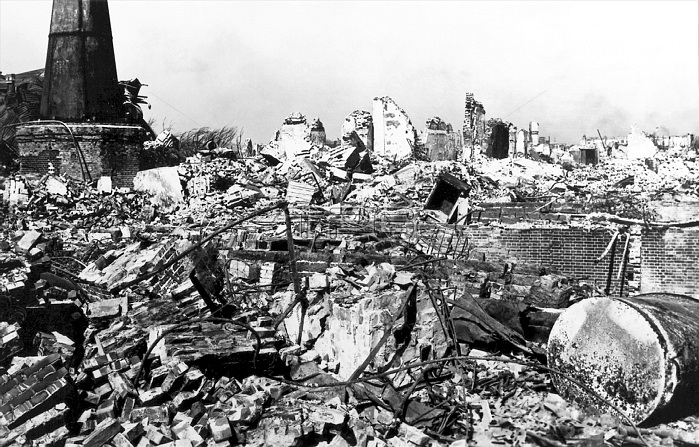
The Great Kant? earthquake (?X??憭折???Kant? daishinsai) struck the Kant? Plain on the Japanese main island of Honsh贖 at 11:58 in the morning on Saturday, September 1, 1923. Varied accounts indicate the duration of the earthquake was between four and 10 minutes. The 2011 T?hoku earthquake later surpassed that record, at magnitude 9.0.
The earthquake had a magnitude of 7.9 on the Moment magnitude scale (Mw), with its focus deep beneath Izu ?shima Island in the Sagami Bay. The cause was a rupture of part of the convergent boundary where the Philippine Sea Plate is subducting beneath the Okhotsk Plate along the line of the Sagami Trough.
This earthquake devastated Tokyo, the port city of Yokohama, and the surrounding prefectures of Chiba, Kanagawa, and Shizuoka, and caused widespread damage throughout the Kant? region. The power was so great in Kamakura, over 60 km (37 mi) from the epicenter, it moved the Great Buddha statue, which weighs about 93 short tons (84,000 kg), almost two feet.
Estimated casualties totaled about 142,800 deaths, including about 40,000 who went missing and were presumed dead. The damage from this natural disaster was the greatest sustained by prewar Japan. In 1960, the government declared September 1, the anniversary of the quake, as an annual 'Disaster Prevention Day'.
According to the Japanese conclusive report, 105,385 deaths were confirmed in the 1923 quake.
| px | px | dpi | = | cm | x | cm | = | MB |
Details
Creative#:
TPG32672623
Source:
達志影像
Authorization Type:
RF
Release Information:
須由TPG 完整授權
Model Release:
No
Property Release:
No
Right to Privacy:
No
Same folder images:

 Loading
Loading